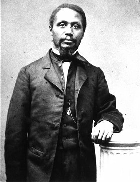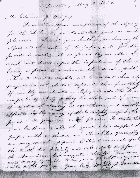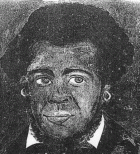
INTRODUCTION
How
can this curriculum model be used?
 This
model features a timeline that covers the mid-19th
century cases in Nantucket and Boston concerning the
right to free and desegregated public education, as
well as the broader state and national context. Primary
sources keyed to the timeline reside in a searchable
database which supplies downloadable images and additional
background information. Sample lessons offer ideas
for using the timeline and primary sources which you
can adapt to fit your own curriculum needs.
This
model features a timeline that covers the mid-19th
century cases in Nantucket and Boston concerning the
right to free and desegregated public education, as
well as the broader state and national context. Primary
sources keyed to the timeline reside in a searchable
database which supplies downloadable images and additional
background information. Sample lessons offer ideas
for using the timeline and primary sources which you
can adapt to fit your own curriculum needs.
It is intended
that students will use the primary sources to begin
a study of their own that involves further research
online and in libraries, in reference rooms and in
the field. In the process, students will sharpen their
technology as well as their research skills. The topic
selected does not add to the curriculum burden, but
rather consists of standards-based materials that
can be integrated into middle and high school studies.
The model is meant to help the busy teacher by providing
basic materials and sample questions that fit into
the required curriculum and promote critical thinking.
More detailed information on how this model relates
to required standards is spelled out under the section
on Curriculum Frameworks.
Why
are Primary Sources important?
 Primary
sources are original materials (documents, maps, photographs,
newspapers, etc.) that can help students think and
learn to be "real historians". They encourage skills
in close observation, evaluation and analysis as well
as understanding different points of view. Using the
Nantucket and Boston school case studies to connect
to the larger picture through the lens of primary
sources can make questions in history seem more immediate
to the students ó it did happen here!
Primary
sources are original materials (documents, maps, photographs,
newspapers, etc.) that can help students think and
learn to be "real historians". They encourage skills
in close observation, evaluation and analysis as well
as understanding different points of view. Using the
Nantucket and Boston school case studies to connect
to the larger picture through the lens of primary
sources can make questions in history seem more immediate
to the students ó it did happen here!
Massachusetts
is blessed with a long tradition of preserving original
materials. There are excellent repositories that make
these resources available, usually in microfilm or
microfiche for everyday handling, but the originals
may be seen under certain circumstances. Lately more
records are being put online as a way of reaching
a greater number of people and encouraging further
research at the repository. The sources used in the
Boston and Nantucket legal cases were copied and digitized
from originals in the Mass. Archives, Mass. Historical
Society, SPNEA, Nantucket Historical Society, Boston
Public Library, Nantucket Atheneum, and the Supreme
Judicial Court. The Library of Congress, as a repository
of historical items, is another excellent resource
used for this project, and parts of its collections
are digitized for scholars throughout the world. Other
suggestions for locating primary sources will be provided
in the Curriculum Resources listing.
What
is special about the Nantucket and Boston school cases?
 Education
has been the battleground where racism and the dominant
culture have fought over the centuries, with the legal
system as arbiter. In Massachusetts Bay the 1641 Body
of Liberties proclaimed the rights of Englishmen in
this Colony and made slavery legal for blacks, mulattos
and native peoplesóthe first state to define
its place in the colonies, although certainly not
its worst practitioner. Massachusetts was also the
first state to develop a public education system and
one of the first to declare slavery illegal. But the
high ideals of the Bill of Rights in the 1780 Constitution
were not always put into practice. While African Americans
were legally free (as tested in two1783 court cases),
and they had access to the courts, they were often
denied rights, such as public schooling. This study
asks how school segregation happened and why this
was so.
Education
has been the battleground where racism and the dominant
culture have fought over the centuries, with the legal
system as arbiter. In Massachusetts Bay the 1641 Body
of Liberties proclaimed the rights of Englishmen in
this Colony and made slavery legal for blacks, mulattos
and native peoplesóthe first state to define
its place in the colonies, although certainly not
its worst practitioner. Massachusetts was also the
first state to develop a public education system and
one of the first to declare slavery illegal. But the
high ideals of the Bill of Rights in the 1780 Constitution
were not always put into practice. While African Americans
were legally free (as tested in two1783 court cases),
and they had access to the courts, they were often
denied rights, such as public schooling. This study
asks how school segregation happened and why this
was so.
What
impact did these cases have then? Do they have relevance
now?
 With
the new nation expanding its numbers and opportunities,
and the spirit of reform growing in the early 19th
century in New England, the stage was being set for
an assault on slavery and segregation. The abolitionist
movement was recruiting more and more adherents, black
and white, and was gaining strength politically. Some
of the characters in this movement were prominent
in the school dramas as well, and you will see how
the local timelines interrelate with the larger state
and national scene of growing anti-bellum conflict.
David Walker, Frederick Douglass, William Lloyd Garrison,
Charles Sumner and Lydia Maria Child, to mention a
few, had national as well as local significance and
put Massachusetts in the forefront of the movement.
But as is true today, the local school committees
had primary responsibilities for education policies
and usually determined admission policies. In the
cases of Nantucket and Boston, these school committees
held out for a long time in defense of school segregation.
The primary sources in these case studies reveal how
these schools were finally integrated, and how the
local decisions had a far wider impact in the state
and nation. Students will see contemporary parallels
and can relate this history more readily to their
own. Today education remains a battleground for civil
and human rights.
With
the new nation expanding its numbers and opportunities,
and the spirit of reform growing in the early 19th
century in New England, the stage was being set for
an assault on slavery and segregation. The abolitionist
movement was recruiting more and more adherents, black
and white, and was gaining strength politically. Some
of the characters in this movement were prominent
in the school dramas as well, and you will see how
the local timelines interrelate with the larger state
and national scene of growing anti-bellum conflict.
David Walker, Frederick Douglass, William Lloyd Garrison,
Charles Sumner and Lydia Maria Child, to mention a
few, had national as well as local significance and
put Massachusetts in the forefront of the movement.
But as is true today, the local school committees
had primary responsibilities for education policies
and usually determined admission policies. In the
cases of Nantucket and Boston, these school committees
held out for a long time in defense of school segregation.
The primary sources in these case studies reveal how
these schools were finally integrated, and how the
local decisions had a far wider impact in the state
and nation. Students will see contemporary parallels
and can relate this history more readily to their
own. Today education remains a battleground for civil
and human rights.
Image Credits: Top l. Robert
Morris, lawyer for Sarah Roberts, Boston. Courtesy Social
Law Library, Boston; Middle r. Letter from William
Lloyd Garrison to Edward Pompey, Nantucket. Courtesy
Nantucket Historical Association (NHA); Middle l.
African Meeting House of Nantucket. Courtesy NHA;
Bottom r. Absalom Boston, Courtesy NHA.
Acknowledgment:
This project has been funded by a grant from the Secretary
of the Commonwealth, William Francis Galvin, the Massachusetts
Historical Records Advisory Board (MHRAB), and
the National
Historical Publications and Records Commission (NHPRC).
![]()